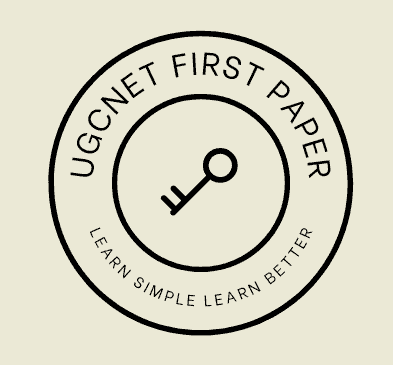(कॉम्प्रिहेंशन क्या है?)
परीक्षा और शिक्षा के संदर्भ में, “बोधगम्यता ” आमतौर पर लिखित या मौखिक जानकारी को बोधने और व्याख्या करने की क्षमता को संदर्भित करती है। बोध परीक्षण या अभ्यास किसी दिए गए पाठ, अनुच्छेद या जानकारी के सेट के बारे में किसी व्यक्ति की बोध का आकलन करते हैं। ये आकलन विभिन्न रूपों में आम हैं, जैसे पढ़ने की बोध के परीक्षण, सुनने की बोध के परीक्षण और बहुत कुछ। बोध अभ्यास का उद्देश्य किसी व्यक्ति की प्रदान की गई सामग्री में प्रस्तुत अर्थ, विचारों और विवरणों को बोधने की क्षमता का मूल्यांकन करना है।
यहां बताया गया है कि बोध परीक्षण आम तौर पर कैसे काम करता है:
1. पढ़ना या सुनना: पढ़ने की बोध की परीक्षा में, आपको आमतौर पर पढ़ने के लिए एक लिखित अनुच्छेद दिया जाता है। सुनने की बोध की परीक्षा में, आप किसी शिक्षक या परीक्षक की तरह किसी ऑडियो रिकॉर्डिंग या वक्ता को सुन सकते हैं।
2. प्रश्न: गद्यांश को पढ़ने या सुनने के बाद, आपके सामने प्रश्नों का एक सेट प्रस्तुत किया जाता है। ये प्रश्न जटिलता में भिन्न हो सकते हैं और इनमें बहुविकल्पीय प्रश्न, सही/गलत प्रश्न, लघु उत्तरीय प्रश्न या निबंध-शैली के प्रश्न शामिल हो सकते हैं।
3. बोध का प्रदर्शन: आपको गद्यांश की अपनी बोध के आधार पर प्रश्नों का उत्तर देना होगा। आपके उत्तरों में मुख्य जानकारी निकालने, अर्थ का अनुमान लगाने, तार्किक संबंध बनाने और सामग्री को सटीक रूप से सारांशित करने की आपकी क्षमता प्रतिबिंबित होनी चाहिए।
4. कौशलों का मूल्यांकन: बोध परीक्षण कई कौशलों का मूल्यांकन करते हैं, जिनमें शामिल हैं:
– शब्दावली: शब्दों और उनके अर्थों का आपका ज्ञान।
– अनुमान: प्रस्तुत जानकारी के आधार पर निष्कर्ष निकालने की आपकी क्षमता।
– सारांश: परिच्छेद के मुख्य बिंदुओं को संक्षिप्त करने की आपकी क्षमता।
– आलोचनात्मक सोच: पाठ का विश्लेषण और मूल्यांकन करने की आपकी क्षमता।
5. स्कोरिंग: कॉम्प्रिहेंशन टेस्ट में आपका प्रदर्शन आमतौर पर आपके उत्तरों की शुद्धता और पूर्णता के आधार पर स्कोर किया जाता है। विभिन्न प्रकार के प्रश्नों में अलग-अलग बिंदु मान हो सकते हैं।
किसी छात्र की लिखित या बोली गई सामग्री को बोधने और उसकी व्याख्या करने की क्षमता का आकलन करने के लिए आमतौर पर भाषा दक्षता परीक्षणों, मानकीकृत परीक्षण, शैक्षणिक परीक्षाओं और विभिन्न अन्य शैक्षिक संदर्भों में बोध का आकलन किया जाता है। वे न केवल विषय वस्तु के बारे में आपके ज्ञान को मापने के लिए बल्कि आपके पढ़ने या सुनने के कौशल, आलोचनात्मक सोच और किसी पाठ या भाषण से प्रासंगिक जानकारी निकालने की आपकी क्षमता को मापने के लिए डिज़ाइन किए गए हैं।
What is Comprehension?
In the context of exams and education, “comprehension” typically refers to the ability to understand and interpret written or verbal information. Comprehension tests or exercises assess a person’s understanding of a given text, passage, or set of information. These assessments are common in various forms, such as reading comprehension tests, listening comprehension tests, and more. The purpose of comprehension exercises is to evaluate a person’s ability to grasp the meaning, ideas, and details presented in the provided content.
Here’s how a comprehension test typically works:
1. Reading or Listening: In a reading comprehension test, you are usually given a written passage to read. In a listening comprehension test, you might listen to an audio recording or a speaker, like a teacher or examiner.
2. Questions: After reading or listening to the passage, you are presented with a set of questions. These questions can vary in complexity and may include multiple-choice questions, true/false questions, short-answer questions, or essay-style questions.
3. Demonstrating Understanding: You need to answer the questions based on your understanding of the passage. Your answers should reflect your ability to extract key information, infer meaning, make logical connections, and summarize the content accurately.
4. Skills Assessed: Comprehension tests assess several skills, including:
– Vocabulary: Your knowledge of words and their meanings.
– Inference: Your ability to draw conclusions based on the information presented.
– Summarization: Your capacity to condense the main points of the passage.
– Critical Thinking: Your ability to analyze and evaluate the text.
5. Scoring: Your performance in a comprehension test is usually scored based on the correctness and completeness of your answers. Different types of questions may carry different point values.
Comprehension assessments are commonly used in language proficiency tests, standardized testing, academic exams, and various other educational contexts to gauge a student’s ability to understand and interpret written or spoken material. They are designed to measure not only your knowledge of the subject matter but also your reading or listening skills, critical thinking, and your ability to extract relevant information from a text or speech.
